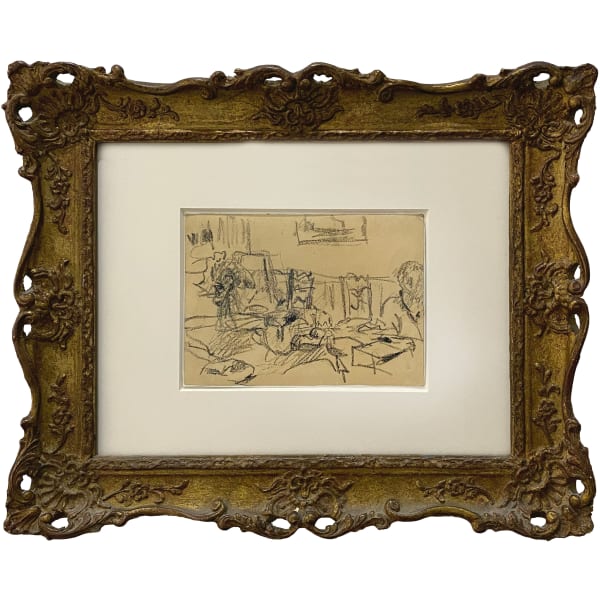Pierre Bonnard French, 1867-1947
Pierre Bonnard gave up law to become an artist in the late 1800s, and after a brief period in the military, he joined the group of young painters called the Nabis (the prophets) in 1889. The Nabis, influenced by Paul Gauguin and Japanese prints, experimented with arbitrary color, expressive line, a wide range of mediums, and flat, patterned surfaces.
Bonnard was well-known for his domestic interiors, and he returned to the subject again and again throughout his career, as in Interior Scene (ca. 1920s). Bonnard would sketch these scenes from life and later use them as references for his paintings. Bonnard often positioned the viewer right at the edge of the table - almost inside the painting. However, the compressed linear perspective flattens the pictorial space and tips the entire scene toward us.
In 1890 Bonnard shared a studio with Vuillard and Denis, and he began to make color lithographs. The following year he met Henri de Toulouse-Lautrec. Also in 1891 he had his first show at the Salon des Indépendants and in the Nabis’ earliest exhibitions at Le Barc de Boutteville. Bonnard exhibited with the Nabis until they disbanded in 1900. His first solo show, at the Galerie Durand-Ruel in 1896, included paintings, posters, and lithographs. In 1897 Ambroise Vollard published the first of many albums of Bonnard’s lithographs and illustrated books. In 1903 Bonnard participated in the first Salon d’Automne and in the Vienna Secession, and from 1906 he was represented by Galerie Bernheim-Jeune, Paris.
Bonnard traveled abroad extensively and worked at various locations in Normandy, the Seine valley, and the south of France (he bought a villa in Le Cannet near Cannes in 1925), as well as in Paris. The Art Institute of Chicago mounted a major exhibition of the work of Bonnard and Vuillard in 1933, and the Museum of Modern Art in New York organized Bonnard retrospectives in 1946 and 1964.



